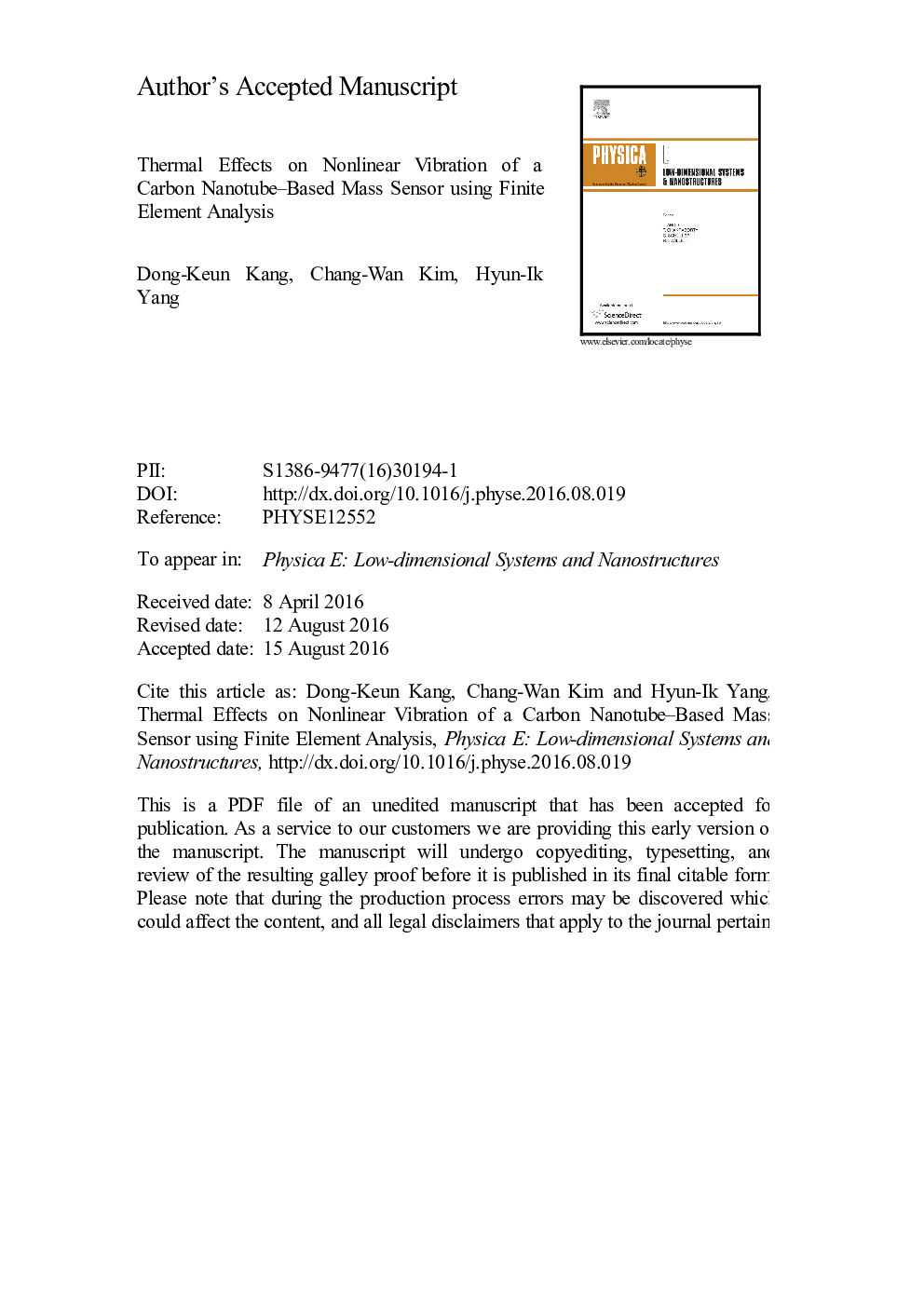| کد مقاله | کد نشریه | سال انتشار | مقاله انگلیسی | نسخه تمام متن |
|---|---|---|---|---|
| 7933939 | 1512864 | 2017 | 24 صفحه PDF | دانلود رایگان |
عنوان انگلیسی مقاله ISI
Thermal effects on nonlinear vibration of a carbon nanotube-based mass sensor using finite element analysis
ترجمه فارسی عنوان
اثرات حرارتی بر روی لرزش غیر خطی یک سنسور توده مبتنی بر نانولوله کربن با استفاده از تجزیه و تحلیل عناصر محدود
دانلود مقاله + سفارش ترجمه
دانلود مقاله ISI انگلیسی
رایگان برای ایرانیان
کلمات کلیدی
موضوعات مرتبط
مهندسی و علوم پایه
مهندسی مواد
مواد الکترونیکی، نوری و مغناطیسی
چکیده انگلیسی
In the present study we carried out a dynamic analysis of a CNT-based mass sensor by using a finite element method (FEM)-based nonlinear analysis model of the CNT resonator to elucidate the combined effects of thermal effects and nonlinear oscillation behavior upon the overall mass detection sensitivity. Mass sensors using carbon nanotube (CNT) resonators provide very high sensing performance. Because CNT-based resonators can have high aspect ratios, they can easily exhibit nonlinear oscillation behavior due to large displacements. Also, CNT-based devices may experience high temperatures during their manufacture and operation. These geometrical nonlinearities and temperature changes affect the sensing performance of CNT-based mass sensors. However, it is very hard to find previous literature addressing the detection sensitivity of CNT-based mass sensors including considerations of both these nonlinear behaviors and thermal effects. We modeled the nonlinear equation of motion by using the von Karman nonlinear strain-displacement relation, taking into account the additional axial force associated with the thermal effect. The FEM was employed to solve the nonlinear equation of motion because it can effortlessly handle the more complex geometries and boundary conditions. A doubly clamped CNT resonator actuated by distributed electrostatic force was the configuration subjected to the numerical experiments. Thermal effects upon the fundamental resonance behavior and the shift of resonance frequency due to attached mass, i.e., the mass detection sensitivity, were examined in environments of both high and low (or room) temperature. The fundamental resonance frequency increased with decreasing temperature in the high temperature environment, and increased with increasing temperature in the low temperature environment. The magnitude of the shift in resonance frequency caused by an attached mass represents the sensing performance of a mass sensor, i.e., its mass detection sensitivity, and it can be seen that this shift is affected by the temperature change and the amount of electrostatic force. The thermal effects on the mass detection sensitivity are intensified in the linear oscillation regime and increase with increasing CNT length; this intensification can either improve or worsen the detection sensitivity.
ناشر
Database: Elsevier - ScienceDirect (ساینس دایرکت)
Journal: Physica E: Low-dimensional Systems and Nanostructures - Volume 85, January 2017, Pages 125-136
Journal: Physica E: Low-dimensional Systems and Nanostructures - Volume 85, January 2017, Pages 125-136
نویسندگان
Dong-Keun Kang, Chang-Wan Kim, Hyun-Ik Yang,
